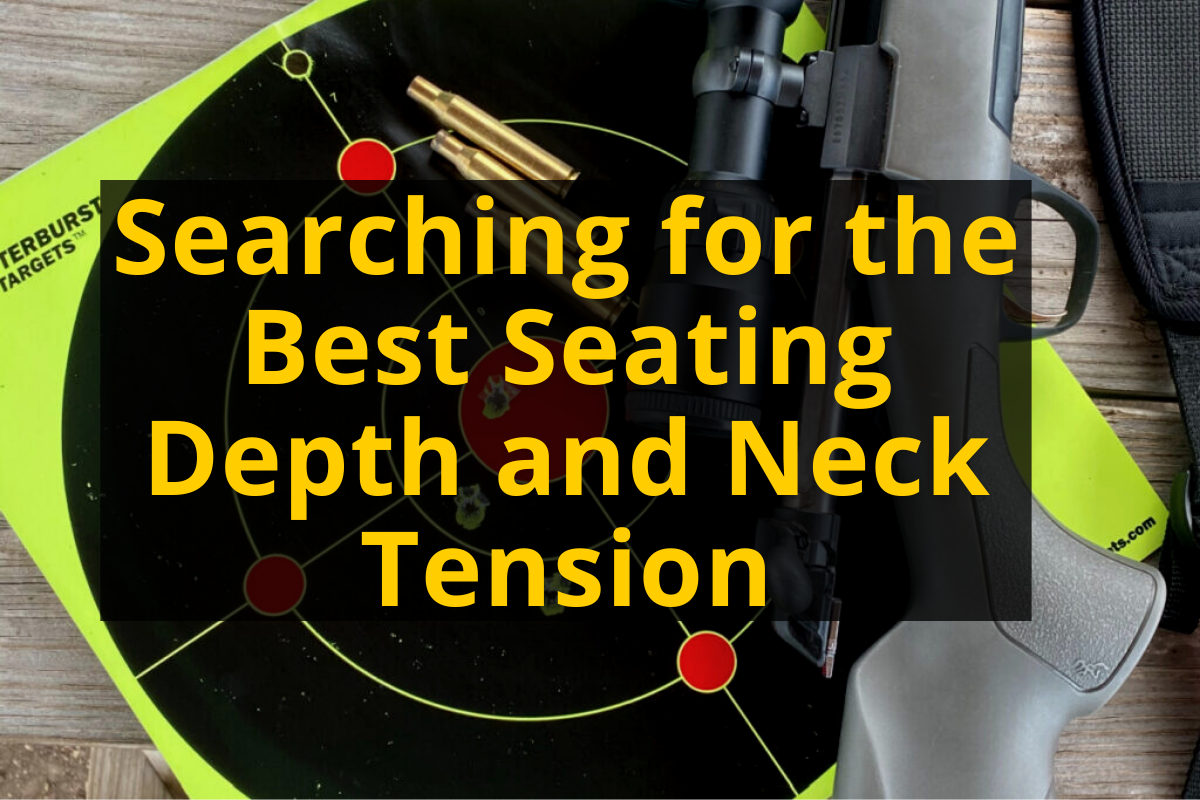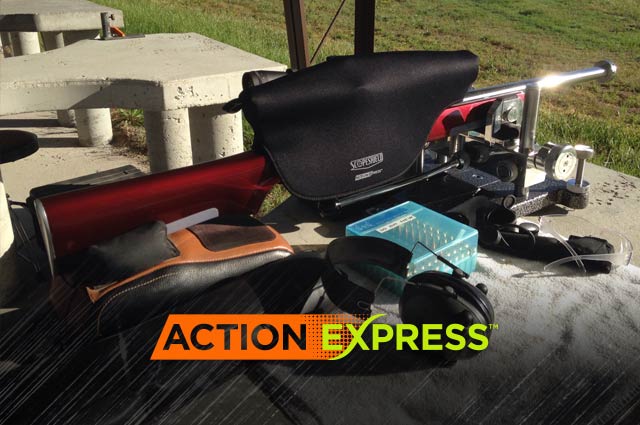In the previous post of this series on how to zero a rifle, Jason Stanley, National Benchrest Champion, found the powder charge tune window and optimal bullet for his rifle barrel. In this post, he starts searching for the seating depth tune window and finds the best neck tension.
Varying the Seating Depth
Range Day 5: 4-24-19 = 71 degrees F. 5 mph wind, slight mirage.
We have had lots of wind and heavy mirage this spring, making it tough to get out and do any type of tuning. It has been great practicing weather but not good tuning weather. However, today was pretty decent. There was some mirage but it was consistently running the same direction as the wind, so I decided to give it a try.
I loaded up three sets of three rounds. All with BIB 112 gr 7 ogive bullets, 34.7 gr of H4198, .324 neck bushing, and CCI BR 4 primers. The variable that I changed this time was the seating depth.
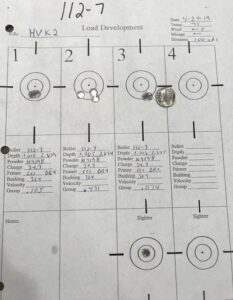
112-7 Group Target 3: Variable = Seating Depth
To make sure there is no miscommunication over how to zero a rifle; when the bullet just touches the rifling of the barrel I call that .000. That .000 mark is my “just touching” reference from which all other measurements are made. When I “jam” the bullet into the rifling .010 I call that +.010. If I was off of the rifling (jumping) by .010 I would call that -.010.
Analyzing the Targets
Target # 1 was my standard +.010. It shot another three shot, consistent low one group of .105”. Target #2 was a seating depth of +.005. It shot an ugly .431” The first two shots were touching with some vertical. The third shot went way to the left. After I shot, I noticed the tail on the first flag was a little more active than my previous two shots, however not enough to move the bullet that far. It is hard for me to understand how a seating depth change of .005” could make the load that wind sensitive, but something happened. Target #3 was what I was looking for. This load had a seating depth of +.016. (I was going for +.015, but this is where they ended up so I shot them). On my first shot, I noticed the hole looked small. That is always a good sign. My next two shots opened the group up slightly for a total three shot group of .074”. This is a perfect example of the trend I am looking for; as my jam increased my groups got smaller.
The next time to the range I need to try +.020 and +.025 jam. I do not like going more than +.020 jam because I increase the risk of sticking a bullet if I have a bad primer or an emergency cease fire. I will only go past +.020 if that is the only place I can get the rifle to shoot. It looks like that not the case with the barrel, but I need to keep going to get my data for the seating depth window. I will also try different bushings giving me the last tuning data; neck tension.
Varying the Neck Tension
Range Day 6: 5-17-19 = 65 degrees F. 5-10 mph wind, decent mirage.
This day was meant to be my final day. When I arrived at my range, I noticed the mirage running left to right. Dang it!!! Oh well, I decided to try my neck tension loads anyway. I had six rounds loaded with 34.7 gr of H4198, BIB 112-7 bullets all at +.015 with CCIBR4 primers. My only variable, on these rounds, was the neck tension.
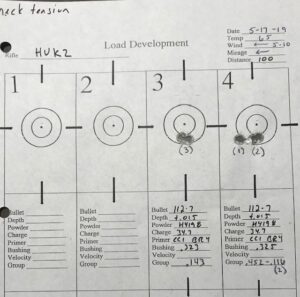
112-7 Group Target 4: Variable = Neck Tension
As you can see from the target, the mirage was playing tricks on me. The .323 bushing (.004 neck tension) shot a decent .143” group. The .325 bushing (.002 neck tension) shot a two shot group of .116” but a three shot group of .452”. I am contributing that to the mirage. The standard .324 bushing (.003 neck tension) has already been tested and will be tested again with the seating depths. Based on my experience, the .324 bushing has already proven itself and the .003 neck tension is right where I need to be.
How to Zero a Rifle With the Best Load
In the next and final post of this series, Jason establishes the seating depth tuning window and discusses the best load for his rifle. For an overview of Jason’s approach on how to zero a rifle, we suggest visiting our first post, tuning a rifle barrel.
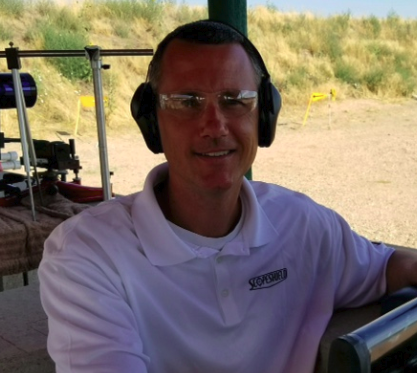
Jason is a father, husband, avid outdoorsman, Benchrest shooter, and science teacher. Jason is our go-to for learning about Benchrest Shooting, loading techniques, and hunting. Feel free to ask questions in the comments, and if you like this post make sure you hit the like button.

